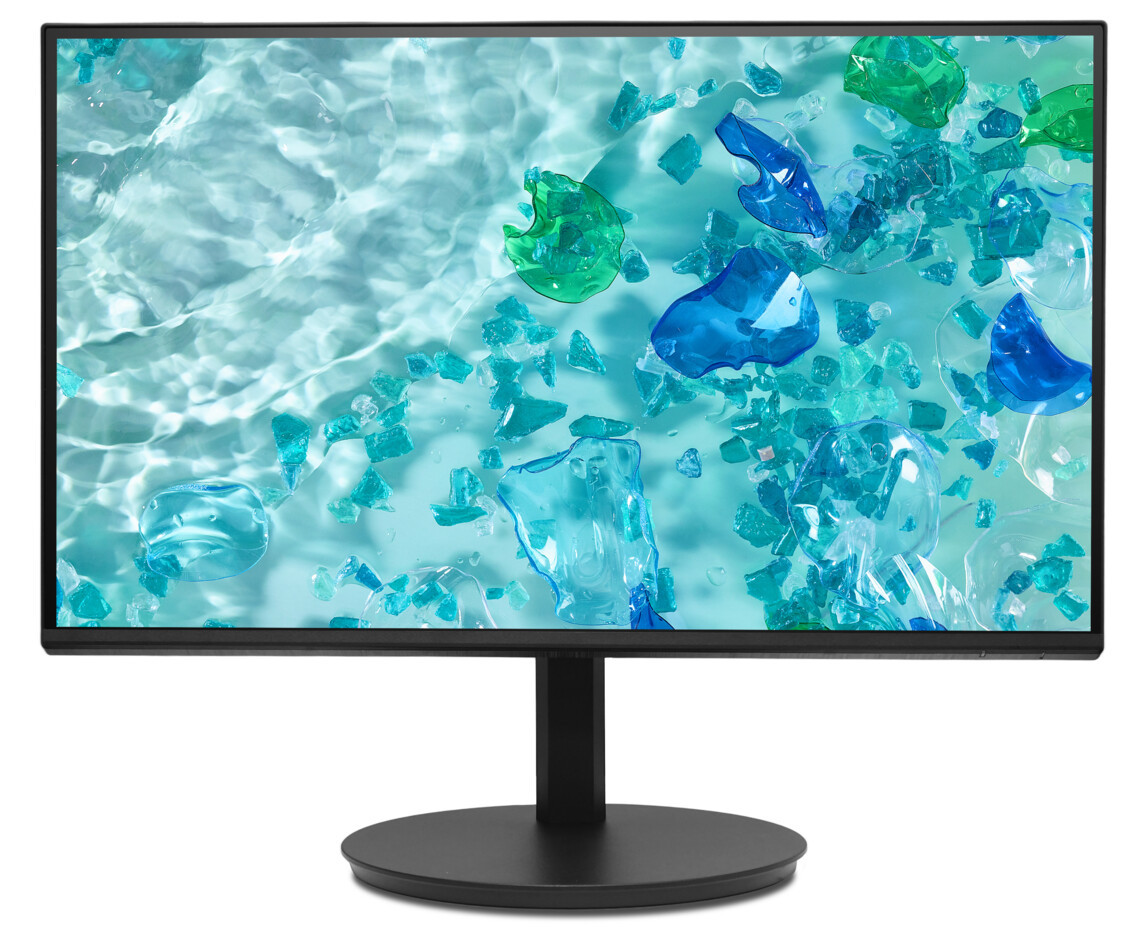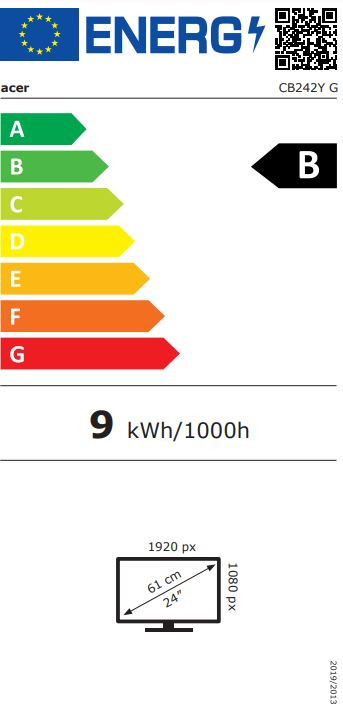















£120.44*
- Resolution 1920 x 1080 Full HD
- Diagonal 24"
- Refresh Rate 120Hz
- Aspect Ratio 16:9



Product information
Acer CB2 Series – The perfect monitor for work and leisure
For those who want more from their daily work or leisure time, the Acer CB2 series offers the ideal solution. With a modern zero-frame design, flexible ergonomic features and environmentally friendly production, this monitor sets new standards in terms of comfort and sustainability. Whether at home or in the office, this screen fits elegantly and functionally into any environment.
Technical highlights at a glance:
- Screen size: 60.5 cm (23.8 inch) diagonal
- Resolution: Full HD (1920x1080)
- Response time: 4ms (GTG), 1ms (VRB)
- Brightness: 250 cd /m²
- Connectors: 1x VGA, 1x HDMI (1.4), 1x DisplayPort (1.2), Audio In/Out
- Ergonomics: height adjustable, tiltable and rotatable with pivot function
Stunning image quality from every angle
Thanks to an IPS panel with a viewing angle of up to 178°, the Acer CB2 monitor can be optimally viewed from anywhere in the room. Even when viewed from the side, the colours remain vivid and unadulterated, while the image sharpness remains consistently high. This makes the screen ideal for team meetings, presentations and relaxed use in the home.
Smooth images without delays
Say goodbye to jerky or distorted images! AMD® Radeon FreeSync™ technology ensures that the monitor's frame rate is perfectly matched to that of your computer. This means you can enjoy a smooth and pleasant viewing experience, whether you're streaming movies or playing fast-paced games.
Ergonomics and the environment in harmony
The Acer CB2 series offers you fully customisable ergonomics: height adjustment, rotation and tilt can be optimally set to your needs and help prevent neck and back problems. At the same time, Acer places a high value on sustainability. The housing consists of up to 85% recycled plastic, including 5% materials from ocean waste. The packaging is also 100% recyclable. With this series, you are making an active contribution to environmental protection.
Discover the Acer CB2 and experience a perfect combination of design, functionality and environmental awareness – for those who want that little bit extra!
Technical data
| Name | Acer Vero CB242YGbmiprx 24" business monitor with zero-frame design |
|---|---|
| Article number | 1000034125 |
| GTIN/EAN | 4711474230324 |
| Manufacturer SKU | UM.QB2EE.G09 |
| EPREL ID | 2057524 |
| Model name | Vero CB242YGbmiprx |
| Brand | Acer |
| Product Type | Monitor |
| Product Series | Acer CB Series |
| Technology | LCD |
| backlight | LED |
| Resolution | 1920 x 1080 Full HD |
| Diagonal | 24" |
| Aspect Ratio | 16:9 |
| Viewing angle - Horizontal | 178° |
| Viewing angle - Vertical | 178° |
| Contrast Ratio | 100,000,000 :1 |
| Max. Brightness | 250 cd/m² |
| Response time | 4ms |
| Refresh Rate | 120Hz |
| Support - VESA | 100 x 100 |
| Inputs | 1x 3,5mm Jack , 1x Displayport , 1x HDMI , 1x VGA |
| heightadjustable foot | 165 mm |
| Product width | 54.03 cm |
| Product height | 31.82 cm |
| Product depth | 4.87 cm |
| Weight | 2.64 kg |
| Colour | Black |
| EEK Spectrum | A to G |
| Energy efficency class | B |
| Delivery contents | DisplayPort Cable , Power cable |
| Condition | New |
| Warranty | 36 Month |
| Warranty type | Bringin service Service and support information |
Downloads
Product safety
| Person responsible for the EU |
|---|
| Acer Computer GmbH |
| Kornkamp 4 |
| 22926 Ahrensburg |
| Germany |
| support@acer.com |



